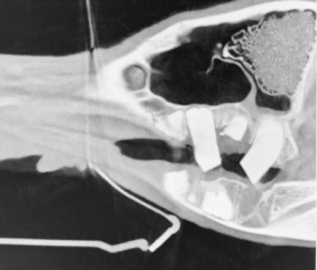A trip to a zoo, nature center or other cultural institution is often planned as a recreational or primarily social event. The reality is these visits are critical learning experiences for youth and adults alike. School-age children spend considerably more time out of school than they do at school. Between evenings, weekends and breaks, in the United States, school accounts for about 6.7 hours a day for 180 days, or roughly 25% of a child’s time spent awake each year. The opportunities youth have in their out-of-school time can make a significant difference in their future school, career and life trajectories.

Cultural institutions are favorite places to visit for a variety of reasons: many people feel safe visiting their local and regional institutions, and they find the exhibits and experiences relevant and meaningful. The institutions are rich in learning opportunities and removed from that typical school-day feeling. They are fun, engaging and memorable. Many institutions are free to visit or offer memberships that make frequent visits affordable.

The Detroit Zoo and Belle Isle Nature Center are top informal learning institutions in the community, combining opportunities to observe animals in naturalistic habitats with stories of individual animals. Many animals are part of critical, global conservation initiatives; others have been rescued from unfortunate circumstances and have inspiring stories about second chances and new beginnings. These stories are shared through signage, in-person by staff and volunteers, and by digital media available to guests. In addition, guests often have the opportunity to participate in hands-on activities that focus on science concepts while engaging with experts in science, technology, engineering and math (STEM) careers during their visit. Perhaps most importantly, visitors build their understanding of animals’ adaptations, physical appearances, behaviors and individual personalities through their observations. This information creates an awareness about the natural world and how human and non-human animals share the same spaces and interact.

Young children, from birth to kindergarten age, are creating their understanding of the world, they’re building their vocabulary and figuring out how things work with an insatiable, natural curiosity. Exposure to places like the Detroit Zoo and Belle Isle Nature Center are critical to developing their future skills and interests. The Belle Isle Nature Center has indoor and outdoor play areas designed specifically for young children. Both areas have natural items like tree cross sections, natural building blocks, rocks and seasonal items like acorns and pinecones for visitors to discover. Adults are essential mentors as they encourage youth to manipulate objects, provide correct vocabulary to identify items, and prompt early learners with questions so they can investigate together. These actions explore cause and effect, help draw parallels between what children know and are learning, and aid in the development of scientific thinking skills.

As a whole, these experiences build visitors’ understanding of the natural world and systems within it. During a visit, guests have opportunities to explore their impact, both direct and indirect, on those systems and how they can make informed decisions that ultimately benefit themselves, wildlife and wild places. Guests who regularly visit informal learning institutions with children are predisposing them to be interested in STEM-related fields and equipping them with the essential skills needed to pursue those careers, such as critical thinking, problem solving, and planning and conducting investigations. So the next time you think: “we should do something fun today, like visit the Detroit Zoo,” know that you’re not only going to enjoy your visit, but, if you bring children, you just may be helping to shape their future.
– Claire Lannoye-Hall is a curator of education for the Detroit Zoological Society.


 b.
b. 
 c.
c.




